Final report for FW15-045
Project Information
Our objective of this three year project was to test numerous soil mixtures for growing lavender and to test intercropping the alley between the lavender rows for soil management. We have selected the Buffalo grass as the best performing cover crop for the lavender alleyway. We have completed and begun distributing a new lavender grower’s guide that is focused on the Southwest.
- To research multiple soil mixtures for more precisely amending soil conditions in the immediate root zones of Lavender and documenting results. (Years 1-3)
- To research multiple different cover crops for surrounding soil to match water conditions of lavender and reduce field competition. (Years 1-3)
- To provide site visits and publish results of this research and encourage the adoption of best practices to Lavender farmers in the Southwest region. (Year 3)
Cooperators
Research
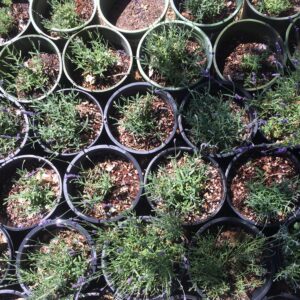 We accomplished our objectives of testing different soil mixes by restricting the plants to five gallon sized pots. This gave us enough control to evaluate the different lavender within the different soil mixes for total bud yield, average height, and average health by how much they filled out their space.
We accomplished our objectives of testing different soil mixes by restricting the plants to five gallon sized pots. This gave us enough control to evaluate the different lavender within the different soil mixes for total bud yield, average height, and average health by how much they filled out their space.
We accomplished the cover crop research by attempting to plant three 100 feet rows of each of the cover crops so they can be compared side-by-side for their weed suppression, water requirements, and companionship ability with the lavender.
Results of Soil Mixes
We measured the growth, bud yield, and overall plant health of the 2 inch lavender starts that were transplanted into 5 gallon pots containing three different mixtures. The results of these mixtures are listed below.
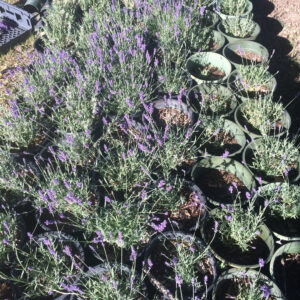
Soil #1 - 25% compost, 20% sand, 5% pumice, and 50% screened composted mulch (1in. or smaller).
Total Buds (32 plants) = 4 oz.
Average Height of Growth = 10 in.
Average Health = Best - many branches spread 90-100% of pot width
Soil #2 - 35% compost, 40% red cinder, 10% pumice, and 15% pecan shell hulls
Total Buds (32 plants) = 3 oz.
Average Height of Growth = 8 in.
Average Health = Good - many branches spread 60-75% of pot width.
Soil #3 - 75% compost, 25% native sandy loam
Total Buds (32 plants) = 1 oz.
Average Height of Growth = 5 in.
Average Health = Poor - very little spread of 20-30% of pot width.
In addition to these customized soil mixes we tested a commercial potting mix containing an approximated 30% compost, 30% perlite and pumice, 30% peat moss, and 10% screened composted mulch. It was only tested over one season but the growth was comparable to Soil #1 with the added benefit of requiring less water due to the water retention created by the peat moss. It was also significantly lighter than the customized soil mixes but at a much higher cost per cubic yard.
One of the additional benefits of these customized soil mixes is #1 and #2 had really good drainage and we did not encounter any problems with root rot like we have experienced before with various commercial potting mixes.
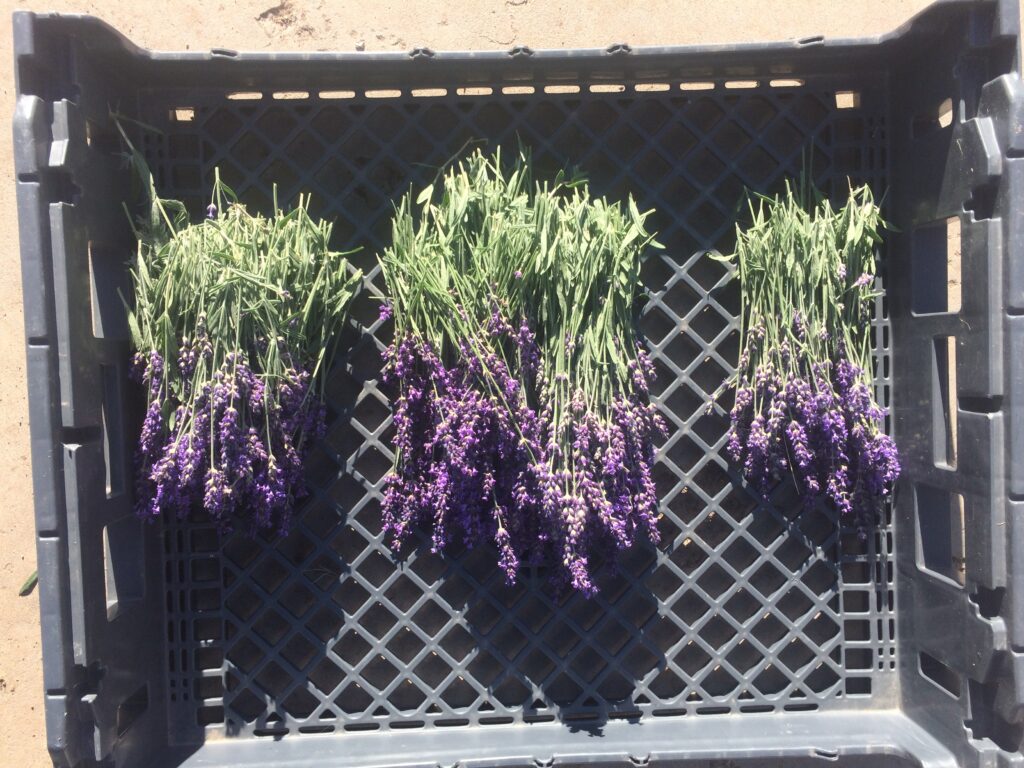
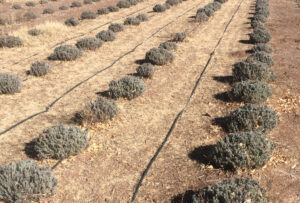
Results of Cover Crop Trials
The Buffalo grass has outperformed the other cover crops we attempted. The trial rows were supplied with supplemental water from micro sprinklers while the grass was initially getting established, but have since been growing without any additional water. The grass provides an ideal solution to foot traffic and year-round soil retention.
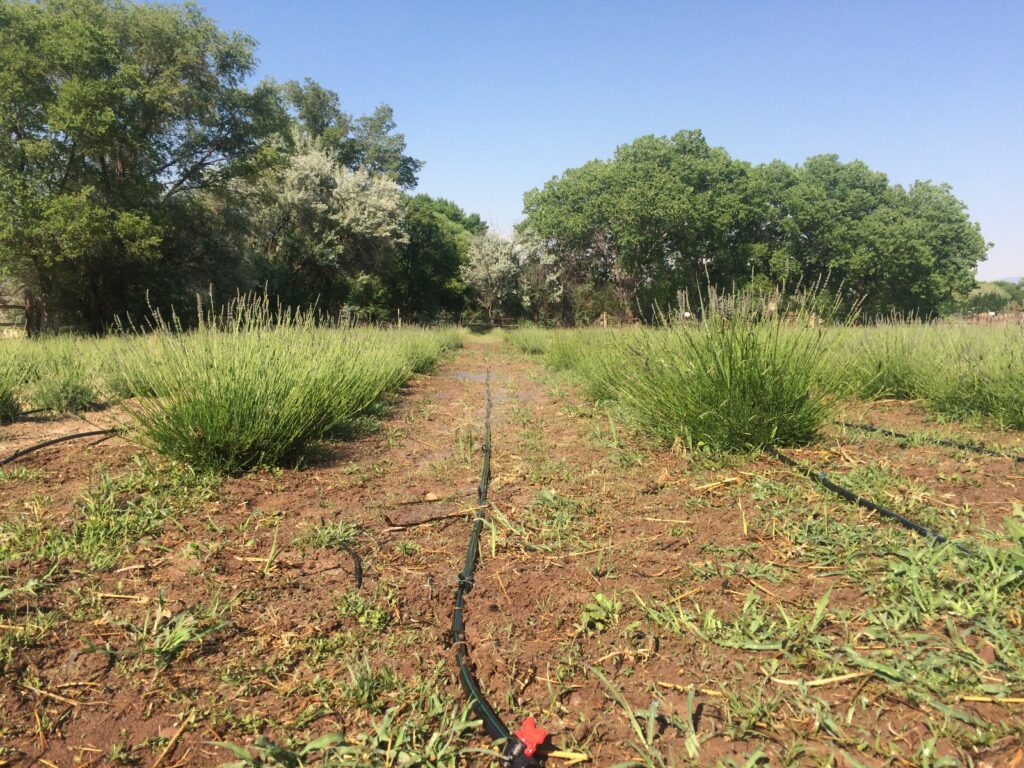
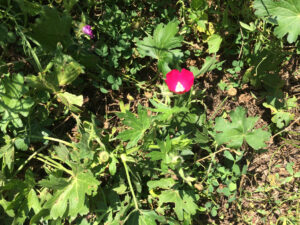
The Purple Poppy Mallow was determined not to be a good companion plant because it grew out on a vine without good ground coverage. The vines could climb over the lavender plants, shading them. The Purple Poppy Mallow did prove to grow well in the climate with it’s large taproot allowing it to survive each winter. It did well with surviving foot traffic. It did not provide a good ground coverage during the winter since it died back to the root.
The Prairie Zinnias continued to prove difficult to germinate. It does not appear to be an ideal solution for planting in the alleyway because of rarity of seed and difficulties to germinate. Prairie Zinnias do provide better ground coverage year-round than the Purple Poppy Mallow but would not be as durable to foot traffic as the Buffalo grass.
Research Outcomes
Education and Outreach
Participation Summary:
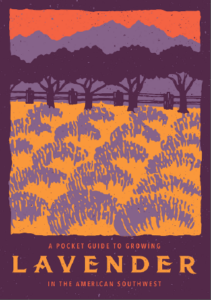 We had several visitors to the farm to see our progress. We have completed the Pocket Guide to Growing Lavender in the American Southwest and have begun distributing the lavender guide. We believe this guide will be our greatest outreach opportunity. We will continue to provide outreach about our research beyond the life of the grant through presentations and future field days.
We had several visitors to the farm to see our progress. We have completed the Pocket Guide to Growing Lavender in the American Southwest and have begun distributing the lavender guide. We believe this guide will be our greatest outreach opportunity. We will continue to provide outreach about our research beyond the life of the grant through presentations and future field days.
Education and Outreach Outcomes
Soil Management
Alley Cropping
Cover Crops